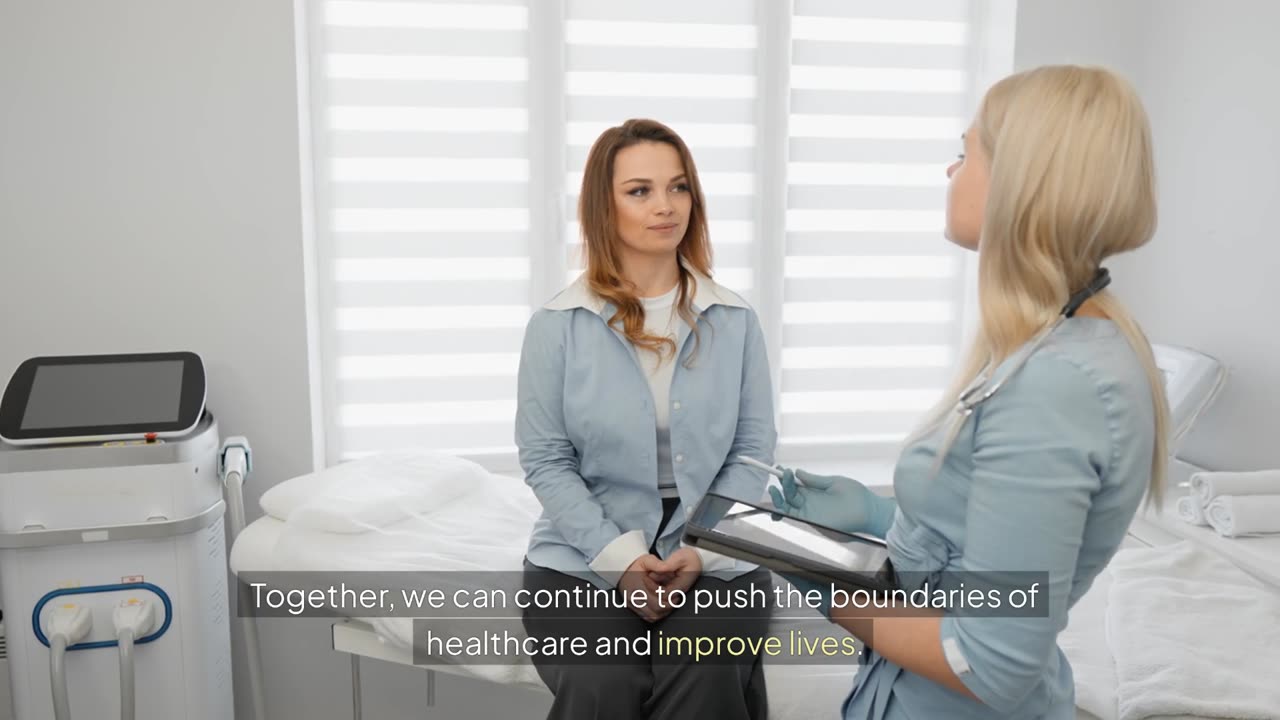Premium Only Content

The End of Pap Smears? New Self-Testing Options Could Revolutionize Cervical Cancer Detection*
**Introduction:**
For decades, women have endured the discomfort and anxiety of Pap smears, a necessary but often dreaded procedure for detecting cervical cancer. The thought of having your legs in stirrups while a doctor scrapes your cervix is enough to make many women avoid the test altogether. But what if this invasive process could soon be a thing of the past? Recent developments in healthcare technology suggest that the days of the traditional Pap smear might be numbered, with new self-testing methods offering a simpler, less invasive alternative.
**A New Era of Cervical Cancer Screening**
### From Stirrups to Swabs: The Changing Face of Cervical Cancer Detection
The Pap smear has long been the gold standard for cervical cancer screening, but it’s far from perfect. The procedure is not only uncomfortable but also often causes anxiety for women, leading to skipped or delayed tests. However, the landscape of cervical cancer detection is on the brink of a major shift. Several healthcare companies are preparing to introduce a revolutionary test that could eliminate the need for a speculum altogether. Instead of enduring a Pap smear, women could soon have the option to simply swab their own vaginas—a procedure similar to the COVID-19 tests many are now familiar with.
### The Science Behind Self-Testing: How It Works
The new self-testing method isn’t just about convenience; it’s grounded in science. Research over the past two decades has shown that self-testing is as effective as traditional Pap smears for women aged 25 and older in detecting the strains of human papillomavirus (HPV) most likely to cause cervical cancer. The process is simple: a woman swabs her own vagina with a device similar to a long cotton swab, then leaves the sample at her doctor’s office or clinic, much like how one would leave a urine sample. The sample is then sent to a lab, where it is tested for high-risk HPV strains.
### FDA Approval and the Road Ahead: What’s Next for Self-Testing?
The U.S. Food and Drug Administration (FDA) recently approved self-testing tools from pharmaceutical giants Roche and BD (Becton, Dickinson, and Company), marking a significant milestone in the journey toward widespread self-testing. However, these tests can currently only be used in medical facilities. The companies hope that, in the future, self-testing at home will become an option, following in the footsteps of countries like Australia, Denmark, the Netherlands, and Sweden, where home testing is already allowed. In the U.S., the FDA is still reviewing the possibility of at-home self-testing, but the progress so far is promising.
### The Global Perspective: How Other Countries Are Leading the Way
While the U.S. is just beginning to embrace self-testing, several other countries have already made significant strides in this area. In Australia, for example, self-testing is not only allowed but encouraged, particularly for women who are overdue for their cervical cancer screening. Similarly, the Netherlands and Sweden have incorporated self-testing into their national cervical cancer screening programs, providing women with a more accessible and less invasive option. These countries have seen high levels of success with self-testing, with studies showing that it is just as effective as traditional Pap smears in preventing cervical cancer.
### The Future of Cervical Cancer Screening: A Look Ahead
The introduction of self-testing could have far-reaching implications for cervical cancer screening, making it more accessible to women who might otherwise avoid it due to discomfort or lack of access to healthcare facilities. This could be particularly beneficial for women in rural or underserved areas, where access to medical care is limited. Moreover, self-testing at home could become a reality in the near future, further increasing the convenience and accessibility of cervical cancer screening. As more data emerges and the FDA continues its review, the potential for self-testing to replace the traditional Pap smear entirely becomes more likely.
**Conclusion: A New Era in Women's Health**
The possibility of self-testing for cervical cancer marks a pivotal moment in women’s health. The discomfort and anxiety associated with Pap smears have long been barriers to regular screening, but with new self-testing methods on the horizon, these barriers could soon be eliminated. As we look forward to a future where women can take control of their health in a more comfortable and convenient way, it’s crucial to stay informed about these developments and advocate for greater access to these life-saving technologies.
Thank you for reading! If you found this article informative, please share it with others who might benefit. Don’t forget to like, subscribe, and comment on our channel to stay updated on the latest advancements in healthcare and women’s health. Together, we can support and empower each other on this journey toward better health.
-
 8:01
8:01
MattMorseTV
12 hours ago $10.19 earnedHe's ACTUALLY doing it...
74.8K65 -
 33:25
33:25
Uncommon Sense In Current Times
15 hours ago $2.78 earnedHollywood’s Woke Agenda Exposed | Kevin Sorbo on Cancel Culture, Faith & the Common Sense Revolution
23.2K -
 8:23
8:23
The Art of Improvement
20 hours ago $1.25 earned7 Smart Habits to Boost Mental Clarity
8.58K2 -
 12:09
12:09
China Uncensored
11 hours agoI Have NEVER Been More Furious
10K18 -
 2:12
2:12
WildCreatures
4 days ago $0.83 earnedThe beauty and mystery of the Pantanal, Brazil's best secret
11.2K2 -
 9:38
9:38
Millionaire Mentor
18 hours agoBernie Sanders LOSES IT After Scott Bessent’s Shocking Comeback
8.42K9 -
 1:35:35
1:35:35
Dialogue works
1 day ago $0.54 earnedLarry C. Johnson & Paul Craig Roberts: Trump’s Plan COLLAPSES as Russia Strikes — Xi & Modi Rise!
7.42K3 -
 14:09
14:09
Zoufry
2 days agoThe Hunt for The Biggest Art Thief in US History
10.4K3 -
 29:23
29:23
DeVory Darkins
1 day ago $15.46 earnedTrump makes BOMBSHELL Announcement as Democrat Judge issues SHOCKING Order
31.1K174 -
 28:31
28:31
James Klüg
1 day agoDemocrats Are FURIOUS With Trump’s Immigration Policy But Know Nothing About It | Part 2
22.1K20